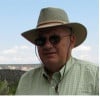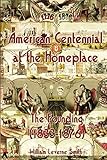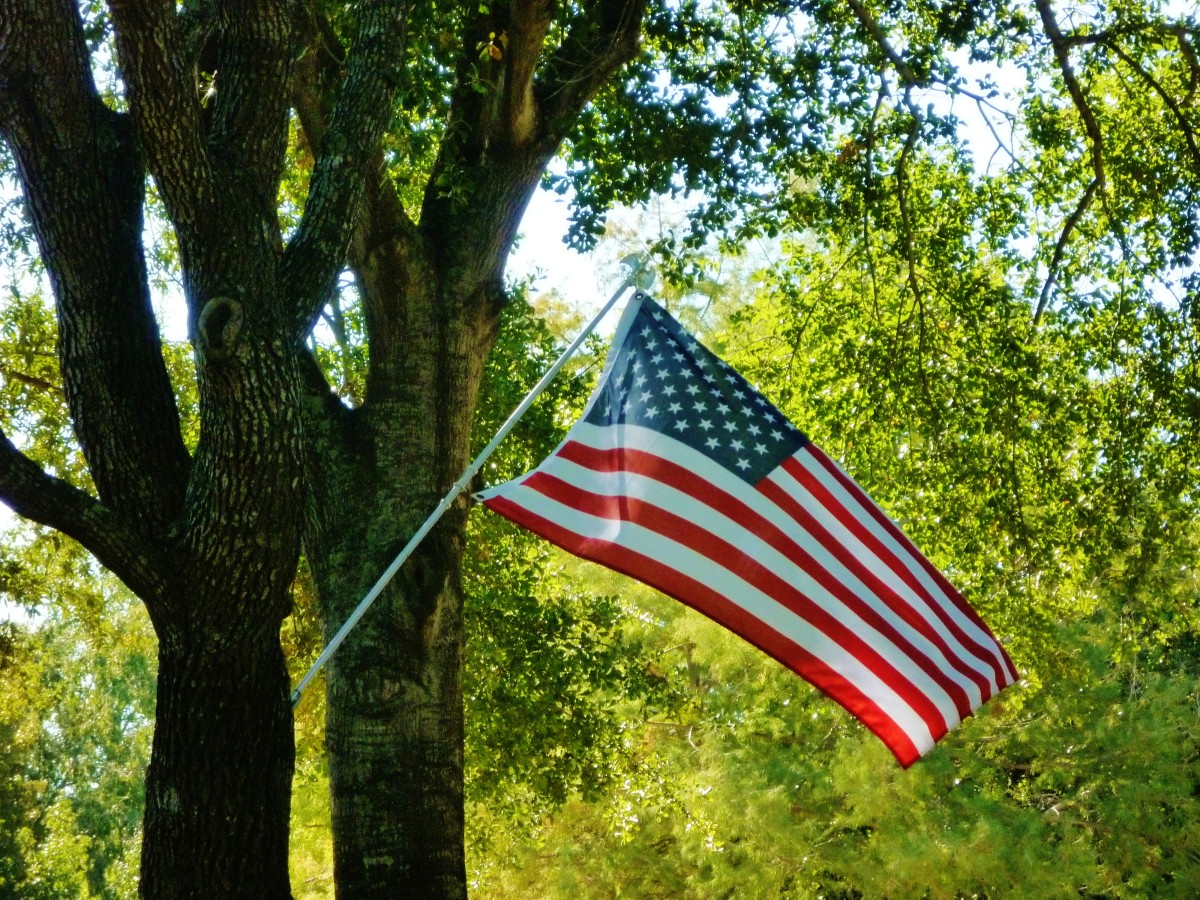Jake Patton Memoirs - JP9 - Late June and July Were Productive Times
They all celebrated the 4th of July Independence Day

Jake led the 4th of July Celebration
On the Tuesday following 4th Sunday in June, after finished their individual morning chore responsibilities, everyone converged on the McDonald building site to ‘raise their cabin.’ This being the third time through this process, everyone knew exactly what to do. The ground had been prepared, the site laid out, and materials were in place to make the ‘raising’ as efficient and effective as possible. At appropriate breaks in the the work, water and nourishment were available in the designated shady areas. It was a hot, humid summer day, but everyone knew how to handle work in these conditions…it was a part of their everyday lives. When they finished, on time and ‘well done,’ everyone returned to their next set of tasks.
The following week on Thursday, everyone looked forward to celebrating their first 4th of July Independence Day celebration in the Oak Creek Valley. Kate and I had invited everyone to come to our place this time rather than meeting at Cardinal Corner. Starting at 11 a.m., I served as Master of Ceremonies of a short program honoring America. After I said a few words to get the program underway, Hugh Truesdale read the Declaration of Independence. We all sung some of our favorite patriotic songs. I had asked both Robert Baldridge and Henry McDonald to each speak briefly sharing the stories of their ancestors’ involvement in the Revolutionary War and the fight for Independence from Britain.
Henry spoke about his grandfather, Walter McDonald, who joined the Maryland Line in the late spring of 1776 at the age of 18. He survived the Battle of Long Island and the Battle of White Plains early in the war. Later, in the South, his unit was in reserve at the Battle of Camden and saw action in the Battle of Cowpens. Robert shared that his great-grandfather, William Baldridge, was a wagoner with the Braddock Expedition in July 1755 along with Daniel Boone and Daniel Morgan. Within a year of that expedition, his grandfather, Charles Baldridge was born. He served in the Revolutionary War from early in 1776 through the end of the war in Yorktown, in 1781. First, he served with the 5th Virginia Regiment in the North, including Trenton, Princeton, Brandywine, Germantown and Monmouth. Later, with the 3rd Virginia Regiment, he was involved in the Siege of Charleston. He added that family stories vary as to whether he was at Yorktown, or not. War stories all tend to include truth and fiction by the third or fourth generation, he suggested.
Jake located a mineral lick near the corner of this property
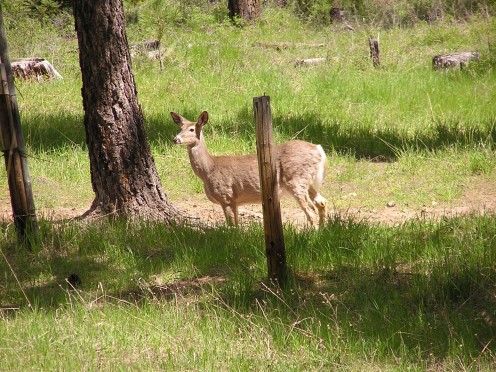
Jake Made A Useful Discovery On His Land
After a community picnic at noontime, the men used an hour or so as an extra community planning opportunity. The Baldridges, for example, shared their most recent plans for their mill. Henry finalized plans for the four day trip to ‘widen the trail’ in a couple of weeks. I announced that we had begun construction of the four-wheel wagon for Henry. Hugh and Owen talked about plans to raise their cabins. By mid-afternoon, each family returned to their own work routines for the rest of the day.
About once a week, I made it a habit to saddle Betsy, my bay mare, and go for a ride of a couple of hours to a part of the valley I had not yet explored. I wanted to learn every inch of the valley as well as I could. I had decided this late afternoon would be a good time to do just that. Not far inside the southwest corner of my half-section here in the center of the valley was the confluence of Center Creek and North Creek. Center Creek was the larger of the two, North Creek coming in from nearly straight north was large enough, however, to make Center Creek further south much bigger. With regular spring rain, I had not really attempted to cross it to examine all the nooks and crannies of that far southwestern corner of my own property in detail. This was a good chance to do that, as I knew the creek as now down enough to do it safely and conveniently.
Mostly, I confirmed that the land there was mostly fairly swampy and small trees around three or four knolls…certainly not farm land, that was for sure. However, it did not take too long at searching the entire area to discover it was not without real value. On the south edge of one of the knolls, I realized there was a sizable mineral lick, including a fair amount of salt, from first observation. I noted that more than one animal trails came in from west to the lick. Animals do have a natural ability to locate licks, that have several beneficial qualities that animals require. The salt is also very beneficial to humans, as well, of course. We can collect the water with the salt, boil off the water, and have pure (generally) salt. I quickly realized this would be valuable to our valley residents, saving having to purchase salt from the outside. That certainly made this part of the trip worthwhile in itself.
Jake continued work on construction of the four-wheel wagon
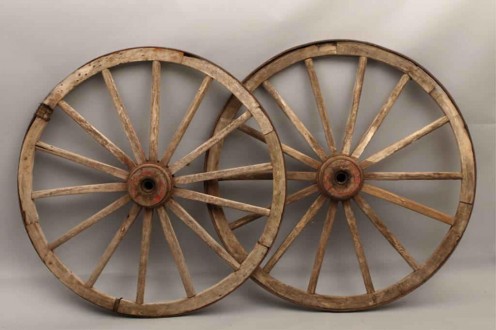
Jake, Hugh and Owen Focused On Wagon Construction
To acquire the correct size and shape of trees with which to manually mill into the lumber needed for the various parts of the four-wheel wagon (including wheels), Hugh, Owen and I scouted nearly the entire ridge around the north and east sides of the valley where the larger and more diverse trees were located. We needed oak, hickory and pine of different sorts for the several types of lumber best suited to this construction. As we found and harvested the various trees, Hugh employed a couple of Henry’s mules to assist us in transporting them to our build site in the central valley.
I had already worked with Owen to create several metal tools we would need to carefully split the logs and then cut and plane them to our needs. Once the materials were all in place, the three of us worked together to create the sizes and shapes we needed. The actual wagon wheels with wooden spokes and iron rims were the most difficult and time consuming, of course. This was work that could not be hurried. And, we each had to work on them alongside and around our other daily tasks.
In the meantime, of course, Henry took Owen and Hugh, along with Robert and David, back over the trail to the west to do the widening project. They took two mules, two oxen and one of the two-wheeled wagons to assist them in their tasks. It took them the full four days they had planned, but all returned safely, with their tasks completed. I spent my time while they were gone using my skills to finish the creation of those wheels. Satisfaction, all around.
From the Author
This series of stories, JPx, is part of a first draft of what I hope and assume becomes a published novel in support of “The Homeplace Saga” series of family saga, historical fiction stories. It features the self-told story of one of the original settlers of the Oak Creek Valley, Colonel Jake Patton. Some, including him, would say he was the leader of the group. He had a very big ego, that is for sure, but he always tried to make it look like what he was doing was for the benefit of the community. And, of course, it was. But, there was always something in it for him, as well. He managed to grow the inheritance he was fortunate to receive from his father into something that left a nice trust fund for his descendants. We’ve already seen some of these stories, earlier, in the Saga tales. Come along, and let’s see how Colonel Patton tells his own story.
Note: I will publish JPx hubs, from time to time. I will write occasional notes at Patreon about Jake Patton. I may write other things elsewhere. These are each a part of the creative process to create the true first draft of a novel. You, my readers, can take part in this effort at www dot patreon dot com slash HomeplaceSagas. Join us there Today.
This is "The Homeplace Saga" series of family-related, historical fiction stories
- "The Homeplace Saga" Blog
The home blog for "The Homeplace Saga" series of historical fiction family saga stories set in the southern Missouri Ozarks. All updates of the series are mentioned on the blog, regardless of platform.
